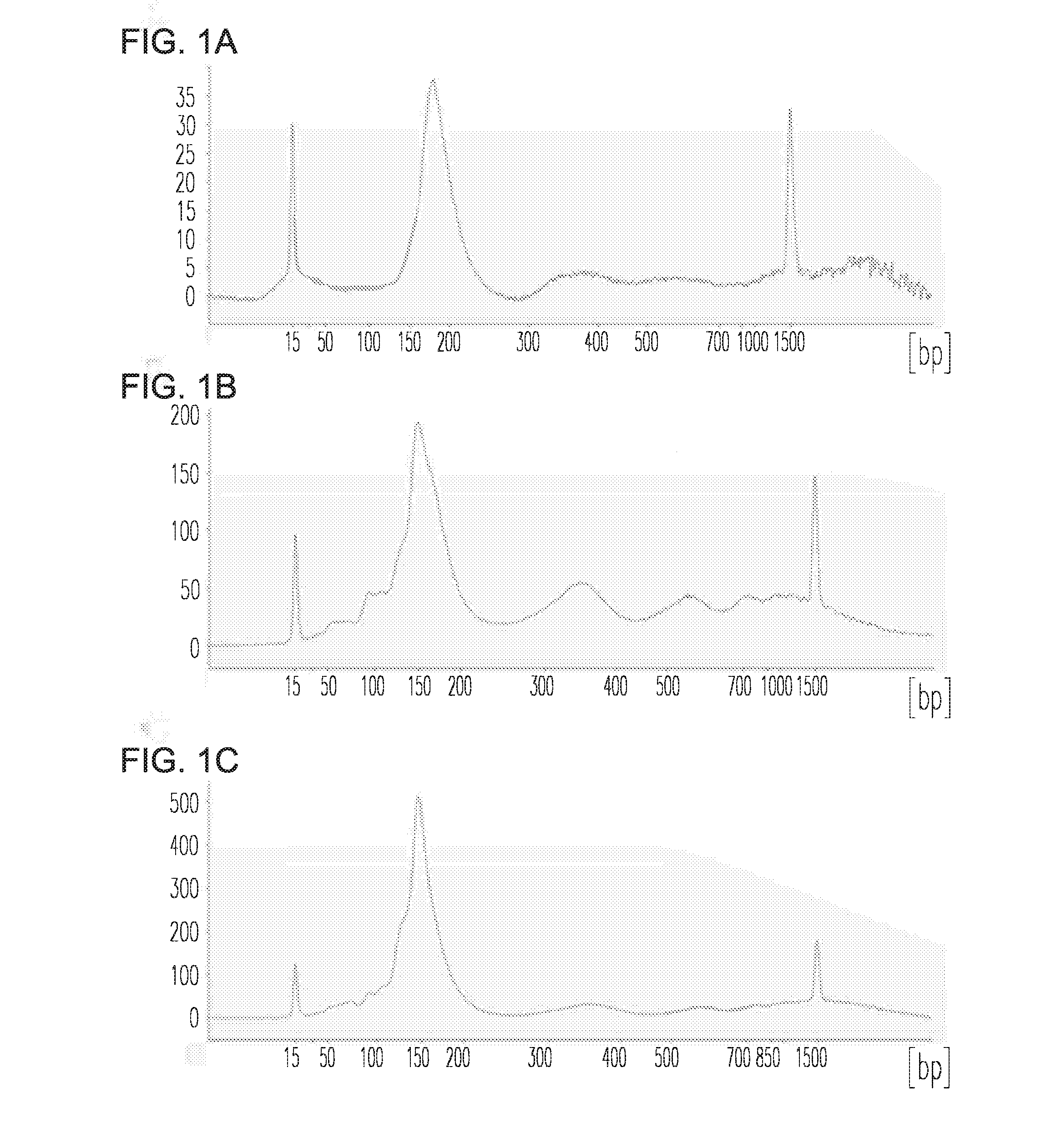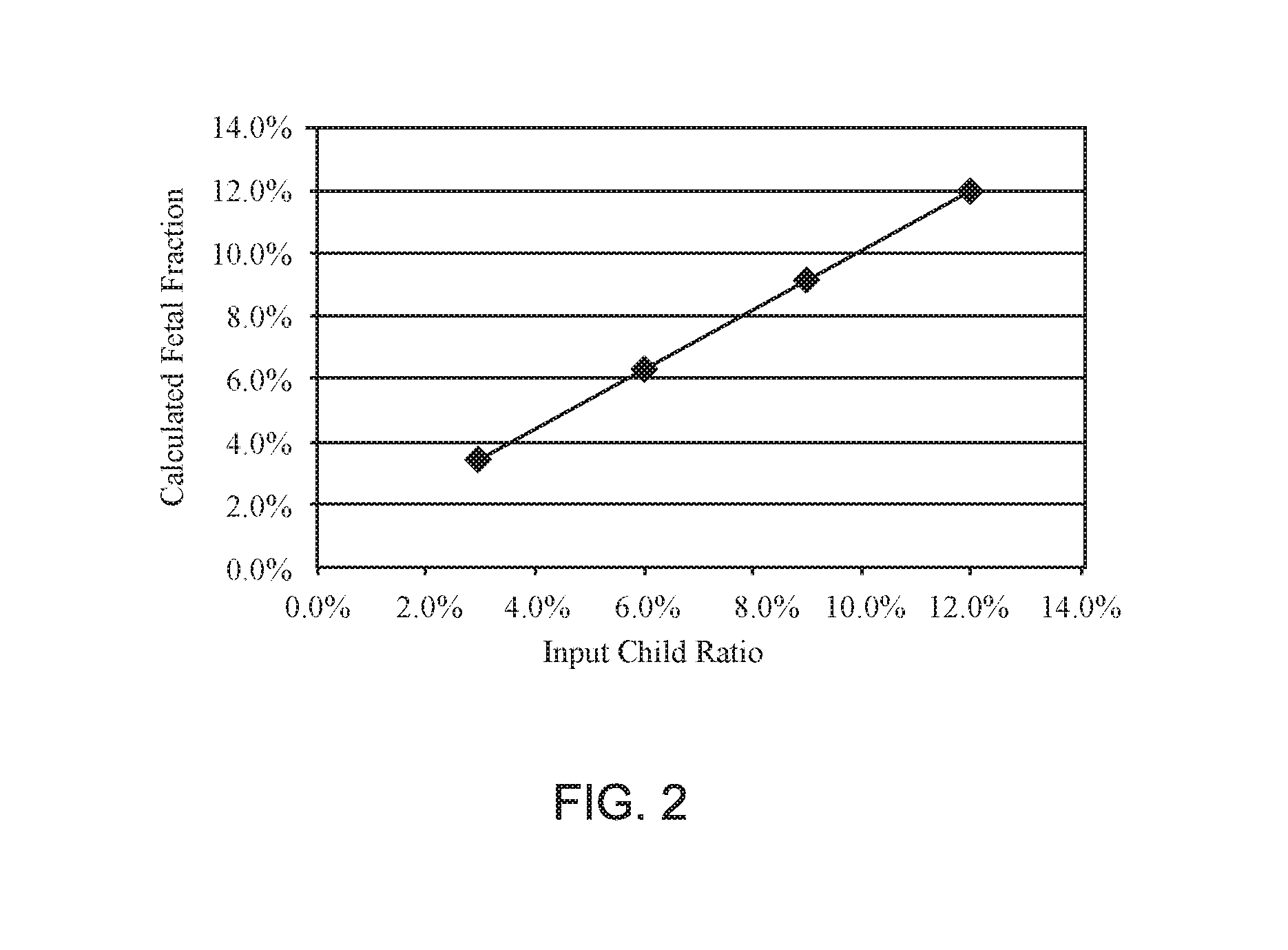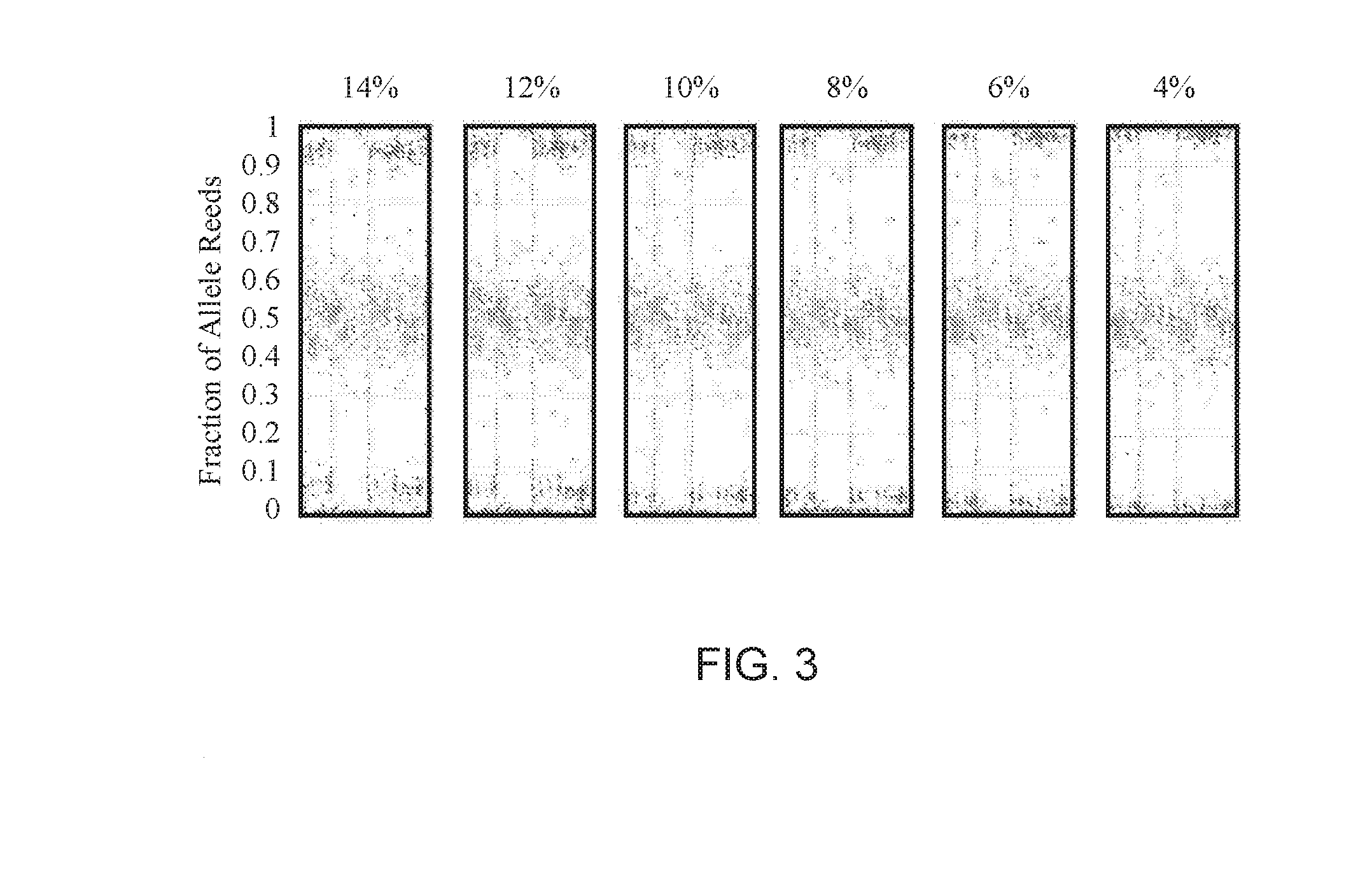Cell free DNA diagnostic testing standards
a technology of dna and diagnostic testing, applied in the field of nucleic acid-based diagnostics, can solve problems such as inconvenient testing, complex operation, and inability to accurately detect cells, and achieve the effects of improving accuracy, improving accuracy, and improving accuracy
- Summary
- Abstract
- Description
- Claims
- Application Information
AI Technical Summary
Benefits of technology
Problems solved by technology
Method used
Image
Examples
example 1
Developing Synthetic Pregnancy Plasma Samples for Use in Non-Invasive Prenatal Testing
[0084]Introduction: Cell-free DNA (cfDNA)-based non-invasive prenatal testing (NIPT) allows for the identification of fetal aneuploidies from the mixture of maternal and fetal cfDNA (cell free DNA) in maternal circulation using next-generation sequencing-based approaches. Such tests are revolutionizing prenatal screening and fetal aneuploidy detection. However, cfDNA is a mixture of maternal and fetal cfDNA, and both the overall amount of cfDNA as well as the fraction of cfDNA from the fetus can be limiting. This limits the number of analyses that can be performed on a single sample (e.g. for development and proficiency testing). Additionally, validating NIPT performance on rare disorders is challenging as patient recruitment is limiting. To overcome these challenges, a novel method for creating an artificial pregnancy plasma DNA (PlasmArt) was invented.
[0085]Methods: DNA was isolated from primary ...
example 2
Cell Free DNA Testing Standards for Genetic Disorders
[0087]Non-invasive Prenatal Screening (NIPS) to conditions that are rare and not routinely screened for in pregnancy is challenging. The collection of sufficient samples to confidently validate test performance is essentially impossible. Further, the samples that are collected are almost always identified after an invasive procedure and therefore of later gestational age and higher fetal fraction. As fetal fraction is a crucial parameter affecting performance of all NIPS, using exclusively higher fetal fraction samples may result in inflated claims of test sensitivity. Therefore, an alternative approach to validating NIPS for rare disorders is needed to adequately estimate test performance. A method to generate artificial cfDNA samples (PlasmArt) that mimic the size distribution of natural cfDNA, i.e., cell-free DNA diagnostic testing standards was developed. PlasmArt can be generated from lymphoblastoid cell lines or white blood ...
example 3
Tumor Standards for Copy Number Variants (CNV)
Samples
[0098]Assay validation was performed using five human breast cancer cell lines (HCC38, HCC1143, HCC1395, HCC1954, and HCC2218) along with matched normal cell lines; these cell lines and matched genomic DNA (gDNA) samples were obtained from American Type Culture Collection (ATCC). Paired father and child cell lines (GM10383 and GM10382 respectively) for producing cell-free nucleic acid standards (details below) were obtained from the Coriell Cell Repository (Camden, N.J.). The child of this cell line is a DiGeorge Syndrome (DGS) proband with a maternal deletion and thus the child cell line has only the paternal DGS 22q11 region; the parental origin of the deletion was determined by our SNP-based mmPCR assay (data not shown). Tumor tissues from 14 breast cancer patients were obtained from Geneticist (Glendale, Calif.) and North Shore-LIJ (Manhasset, N.Y. In addition, matched buffy coat (4 patients) and matched plasma samples (9 pati...
PUM
| Property | Measurement | Unit |
|---|---|---|
| volume | aaaaa | aaaaa |
| volume | aaaaa | aaaaa |
| volume | aaaaa | aaaaa |
Abstract
Description
Claims
Application Information
 Login to View More
Login to View More - R&D
- Intellectual Property
- Life Sciences
- Materials
- Tech Scout
- Unparalleled Data Quality
- Higher Quality Content
- 60% Fewer Hallucinations
Browse by: Latest US Patents, China's latest patents, Technical Efficacy Thesaurus, Application Domain, Technology Topic, Popular Technical Reports.
© 2025 PatSnap. All rights reserved.Legal|Privacy policy|Modern Slavery Act Transparency Statement|Sitemap|About US| Contact US: help@patsnap.com



